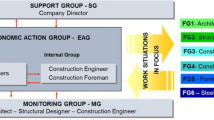
Overview
- Focuses on the development of resilience engineering (RE) as a concept and a field of practice that has contributed to expanding the scope of safety from a preoccupation with failure, to also include the acceptable everyday functioning of a system or an organisation
- Includes case studies that translate RE concepts into practice and demonstrates RE's practical value to researchers, operators, and managers using life experience
- Written in an accessible style to enable those who are new to RE to easily understand concepts and appeal to new practitioners and students
Buy print copy
About this book
This book encapsulates the essential practical lessons learned from the use of Resilience Engineering (RE) for over ten years. The main contents are a series of chapters written by those who have been instrumental in these applications. To increase the value for the reader, each chapter will include: rationale for the overall approach; data sought and reason(s) for choosing; data sources used, data analyses performed, and how recommendations were made and turned into practice.
Serving as a reference for practitioners who want to analyse, support, and manage resilient performance, this book also advances research into RE by inquiring why work goes well in unpredictable environments, to improve work performance, or compensate for deficiencies.
Similar content being viewed by others
Keywords
Table of contents (12 chapters)
-
Front Matter
Editors and Affiliations
About the editors
Bibliographic Information
Book Title: Advancing Resilient Performance
Editors: Christopher P. Nemeth, Erik Hollnagel
DOI: https://doi.org/10.1007/978-3-030-74689-6
Publisher: Springer Cham
eBook Packages: Engineering, Engineering (R0)
Copyright Information: The Editor(s) (if applicable) and The Author(s), under exclusive license to Springer Nature Switzerland AG 2022
Hardcover ISBN: 978-3-030-74688-9Published: 12 October 2021
Softcover ISBN: 978-3-030-74691-9Published: 13 October 2022
eBook ISBN: 978-3-030-74689-6Published: 11 October 2021
Edition Number: 1
Number of Pages: XIII, 158
Number of Illustrations: 13 b/w illustrations, 8 illustrations in colour
Topics: Security Science and Technology, Sustainable Development, Mechatronics, System Performance and Evaluation, Complex Systems, Principles and Models of Security



